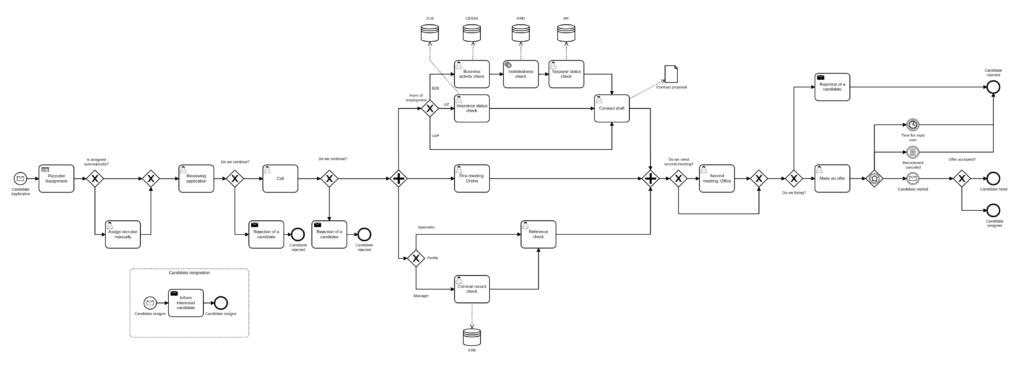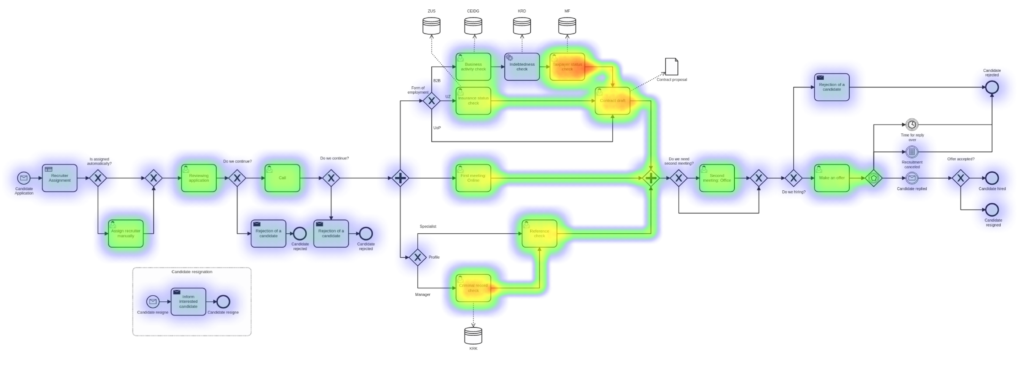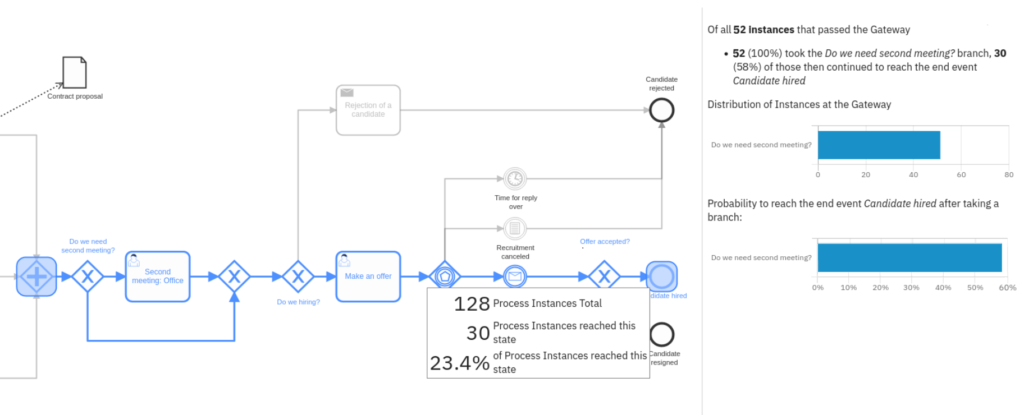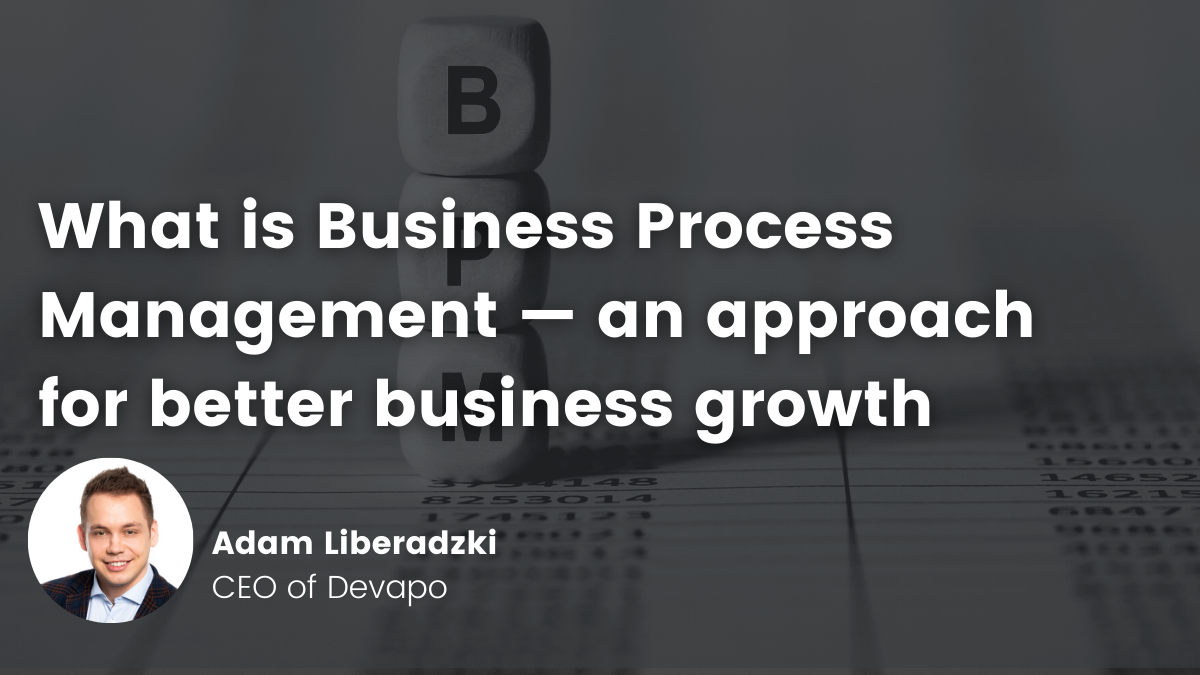- Maciej Pomarański
- Read in 3 min.
Business processes need to be managed for a streamlined and understandable workflow. In addition to the design, automation and implementation phases, an important factor is to use management information about business processes and analyze areas for improvement. This is where Camunda Optimize helps.
What is Camunda Optimize?
Camunda Enterprise Edition deliver solution called Camunda Optimize. It provides the tools and analytical mechanisms needed to process data. This helps with continuous improvement of business processes and with automating decision-making. Bottlenecks and other performance limitations are pinpointed in easy-to-understand reports and dashboards. These can be shared with technical teams and business stakeholders.
The Optimize tool also provides visibility into how processes are performing, including assessing the effectiveness of users and other systems. Based on this information, it is possible to identify areas that require increased allocation of human resources, new software solutions or a new system. Let’s go through some features of the tool!
Based on a sample process in an understandable domain, I will present the basic functionality of the Camunda Optimize tool.

Heatmaps to discover slowdowns
Based on historical data, Camunda Optimize can create heat-maps. They can show the biggest obstacles and process bottlenecks (in the example presented below, it’s the last 100 recruitment processes).

On the above chart, you can see how many candidates passed certain recruitment stages and reached the end of the process. The heatmap shows us areas where the most candidates were lost. That information allows us to analyze the reasons more accurately and recommend possible changes in the process.
Another important functionality provided by Optimize is the monitoring of time spent in each element of the process.

In the example above, it is clearly visible that checking the taxpayer status and preparing the contract draft takes significantly more time than all other activities. This allows us to conclude that allocating more resources or completely automating this task will significantly reduce the duration of the entire recruitment process.
Prediction mechanisms to make data-driven improvements
Basing on prediction mechanisms, the system can provide adaptive rule changes.

The “Branch Analysis” functionality for the sample process shows us what is the probability of hiring a candidate if he passes the first online interview. It will also show what the chances are of receiving positive feedback after the second interview. Camunda Optimize suggests where in the process (on which logic gate) to apply changes in order to get the highest number of positively verified candidates with the least number of instances.

The example above presents a logical gate, eliminating candidates with less than 60% of points after the first interview. After changing the value of the parameter on this gate from 60% to 80%, it is possible to reduce the number of instances (which in this example equals 20 potential candidates). At the same time, the final score will remain unchanged (here it would mean employing 30 people). The use of an additional calibration mechanism saves time in the process. As a result, the total overhead of its operation will be reduced. In this case, recruiters will be able to save time, or the whole process will require fewer recruiters to achieve the same target.
Summary
Summing up, Camunda Optimize provides us with a wide range of tools to analyze historical data. A simple interface allows generating reports that will present the most critical parts of each process. Based on this data, it is possible to monitor the flow of instances and continuously improve each business process.
Check out other articles in the technology bites category
Discover tips on how to make better use of technology in projects







